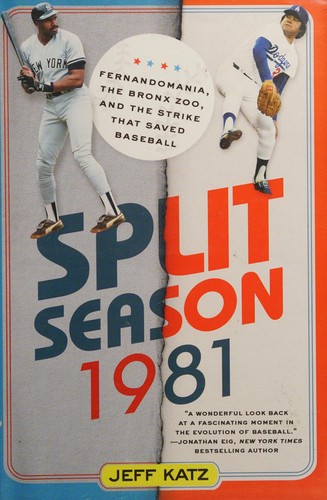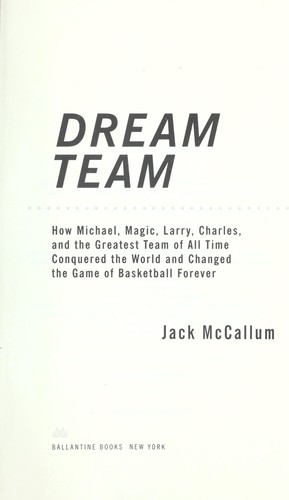Nerd Picnic rated Don't Let's Go to the Dogs Tonight: 4 stars

Don't Let's Go to the Dogs Tonight by Alexandra Fuller
From 1972 to 1990, Alexandra Fuller, known to friends and family as Bobo, grew up on several farms in southern …
Latin American fiction and nonfiction, PG Wodehouse, memoirs of non-famous people.
History, modern or niche. Novels I should have read a long time ago. Speculative short stories.
Linguistics, baseball, and Watership Down.
This link opens in a pop-up window

From 1972 to 1990, Alexandra Fuller, known to friends and family as Bobo, grew up on several farms in southern …

"1981 was a watershed moment in American sports, when players turned an oligarchy of owners into a game where they …

The foundling Tom Jones is found on the property of a benevolent, wealthy landowner. Tom grows up to be a …

Collects autobiographical, illustrated essays and cartoons from the author's popular blog and related new material that humorously and candidly deals …

After the grisly murder of his entire family, a toddler wanders into a graveyard where the ghosts and other supernatural …

"They were the Beatles of basketball, the Mercury Seven in sneakers. In Dream Team, acclaimed sports journalist Jack McCallum delivers …

After a devastating tsunami destroys all that they have ever known, Mau, an island boy, and Daphne, an aristocratic English …
It's mostly about the characters who surrounded Worth, and the painting that was Worth's greatest heist.
I was expecting to see what made Worth smarter or better organized than the other criminals - in other words, what made him like Moriarty - but there are only a couple of pages about his heydey operations. The book tells us that he assigned leads or jobs to various lower thieves, then took a cut of the earnings and sometimes fenced the stolen goods; but it doesn't "show" us how it worked or how big the syndicate was.
In hindsight, that's to be expected. Not only was he a careful criminal who would never leave a paper trail for historians to follow, but it was all over 100 years ago and there's nobody alive to be interviewed. So the author probably did as well as could be done.
The cover and subtitle are …
It's mostly about the characters who surrounded Worth, and the painting that was Worth's greatest heist.
I was expecting to see what made Worth smarter or better organized than the other criminals - in other words, what made him like Moriarty - but there are only a couple of pages about his heydey operations. The book tells us that he assigned leads or jobs to various lower thieves, then took a cut of the earnings and sometimes fenced the stolen goods; but it doesn't "show" us how it worked or how big the syndicate was.
In hindsight, that's to be expected. Not only was he a careful criminal who would never leave a paper trail for historians to follow, but it was all over 100 years ago and there's nobody alive to be interviewed. So the author probably did as well as could be done.
The cover and subtitle are a little misleading as to the actual content, then, but it is interesting and well-researched.

"Peter Godfrey-Smith is a leading philosopher of science. He is also a scuba diver whose underwater videos of warring octopuses …
Fun enough for the nuts and bolts of espionage, disguise, and misdirection in Moscow in the '70s and '80s. Light reading about cool tradecraft.
It's not a memoir, and it doesn't really present an argument, other than that the CIA employed some extremely clever people (which no one would dispute).
The Mendezes are fascinating people and knew the Agency thoroughly from their decades of loyal service. But for that same reason, there's no critical or outsider perspective; very few connections are drawn to shifting world politics, or the arms race, or the influence of Reagan.
Even if they wanted to keep the focus narrowly on espionage tactics vs. the KGB - why not then include some material from or about the KGB side, available post-Cold War? How did the other side perceive what was going on? What were their strengths and weaknesses? (Based on the book, you would think that …
Fun enough for the nuts and bolts of espionage, disguise, and misdirection in Moscow in the '70s and '80s. Light reading about cool tradecraft.
It's not a memoir, and it doesn't really present an argument, other than that the CIA employed some extremely clever people (which no one would dispute).
The Mendezes are fascinating people and knew the Agency thoroughly from their decades of loyal service. But for that same reason, there's no critical or outsider perspective; very few connections are drawn to shifting world politics, or the arms race, or the influence of Reagan.
Even if they wanted to keep the focus narrowly on espionage tactics vs. the KGB - why not then include some material from or about the KGB side, available post-Cold War? How did the other side perceive what was going on? What were their strengths and weaknesses? (Based on the book, you would think that the infamous and horribly effective KGB somehow never figured out anything except what American traitors told them.) Among the dozens of sources in the bibliography, I saw only three that were primarily about the Soviets - pretty strange for a book that is primarily set in Moscow.
Sloppy arguments, especially the parts about American history, and I didn't like her writing style (that is admittedly subjective).
But I'm still glad I read it because there were so many interesting ideas; and she was able to explain elements of deep culture, which are so foundational that they are nearly impossible to see when you live in the culture.